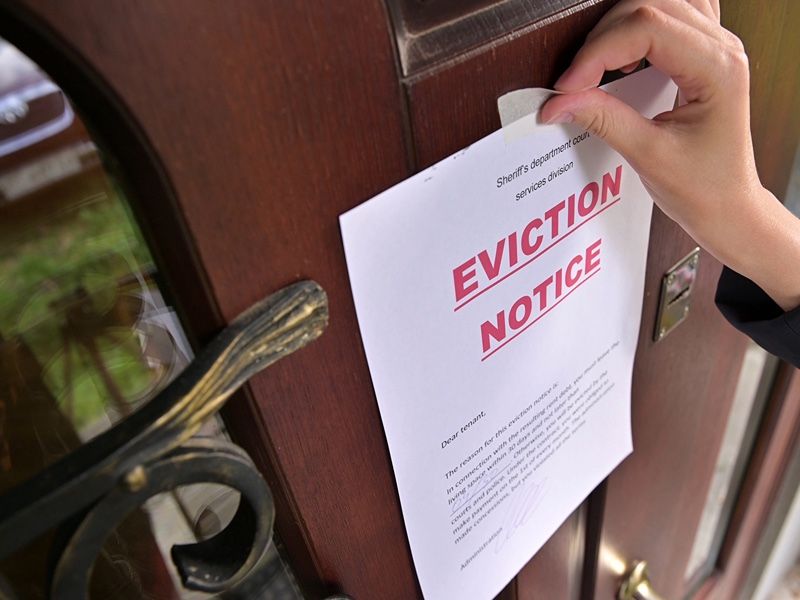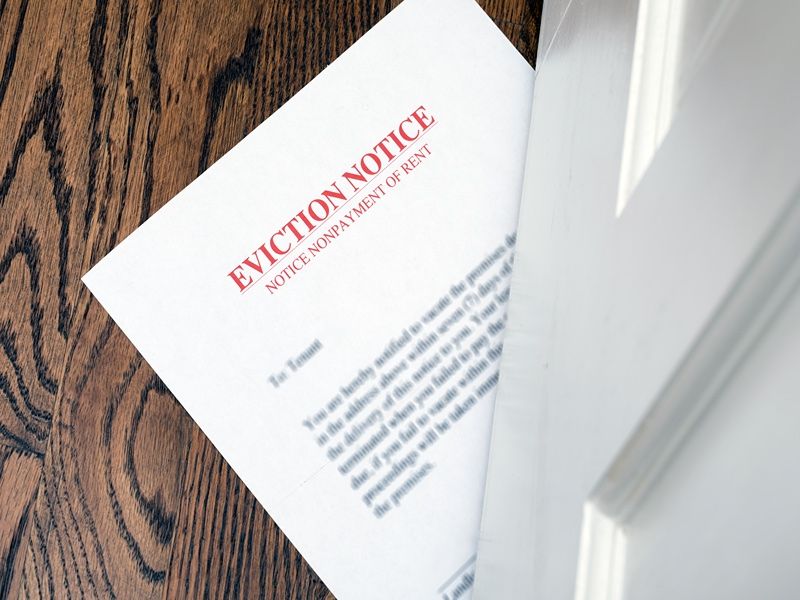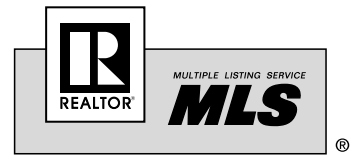What Is The Eviction Process in San Antonio?

No matter how hard you try to prevent evicting a renter, it is sometimes unavoidable. When this happens, it's best to be familiar with the eviction laws. This will ensure that you handle the procedure correctly.
Eviction is relatively simple in San Antonio. A three-day notice is adequate for a renter to depart the premises. You can initiate a
forceful entry and detainer suit
if this notice expires and the renter has not vacated. The length of this process will be determined by the tenant's determination to resist their eviction.
Today, we'll go through the steps and learn how experienced property managers or landlords in San Antonio may deal with, avoid, and implement evictions as a last resort.
What Are The Grounds For Eviction in Texas
As a landlord or prospective landlord, you can legally issue an eviction notice to a tenant for a variety of reasons. Evictions are rarely unexpected or the initial move in attempting to resolve a disagreement. In some circumstances, you may be able to remedy the issue without starting the eviction process.
Legal reasons that a landlord may evict a tenant in San Antonio include:
1. Violation of Lease Agreement
It is critical that you have a proper lease agreement with each tenant. This will specify exactly what is expected of you and the tenant. It will also function as your guide in the event that something goes wrong.
For example, if a tenant is four days late with the rent, the lease should indicate what the next line of action is. Typically, these leases are many pages long and outline what types of offenses may result in eviction. Here are the most significant violations of a lease agreement:
- Non-payment of rent
- Unauthorized pets
- Unauthorized tenants
- Smoking
- Subleasing
- Damage to property
Tenant Defense: Tenant may claim the building is in hazardous condition and that led to withholding of rent. As a landlord, before deciding to evict a tenant over non-payment of rent, ensure that the building is in pristine condition or you have attended to repair requests by tenants. If a tenant violates any terms from the lease agreement, the landlord must issue a 3-Day Notice to Cure Violations or Move Out.

2. Illegal Activity
Another legitimate cause to remove a tenant is if they are abusing your property. A renter who violates their agreement and the law exposes you and them to liability.
Your tenant cannot use your rental unit for commercial purposes if it is zoned for residential use. It cannot be utilized for industrial or manufacturing purposes if it is zoned for commercial use. As a result, it's a good idea for you to understand how zoning and land use rules affect your property.
Tenants are obviously abusing the rental if they run an illegal business out of it. That being said, any renters who seek to sell narcotics of any type may face eviction. Texas law even permits you to instantly terminate the lease of a tenant convicted of public indecency.
Tenant Defense: Tenant may claim false report by the landlord or accuse the landlord of witch hunting. As a landlord, it is important that you have proof such as photos or CCTV footage of a tenant engaging in illegal activities before evicting such a tenant. If a tenant has engaged in illegal behavior within the property, the landlord could issue a 3-Day Notice to Vacate.
3. Fixing Property Damage and Health or Safety Violations
Another legal reason to evict a renter is to clean the premises in order to correct violations of health or safety laws. Issues such as the removal of lead paint, asbestos, and faulty electrical systems may require the eviction of tenants either for short-term or long-term periods.
Similarly, you may be forced to evict your tenant due to property damage. While it is easy to file an eviction for property damages caused by tenants, it may be difficult to evict a tenant to fix property damages not caused by them. However, if you are acting in good faith or the renovations are extensive, you may decide not to renew the tenancy agreement at its expiration.
Furthermore, in certain situations, you may have to compensate the tenant or offer alternative housing. This can be a dicey situation, so it is important that you consult a local attorney for proper guidance to avoid lawsuit.
Tenant Defense: The tenant may claim the landlord failed to give enough notice. To avoid issues like this, it is important that you give up to 3 months’ notice in the event of a serious repair. If the damage was caused by the tenant, you may need to send a three day notice before filing for an eviction.

4. Removing House From the Rental Market
You can also legally evict your tenant if you remove your property from the rental market indefinitely. One of the most common reasons for removing your rental property from the market is to utilize it as your primary residence. If you currently live in the unit but have immediate family moving in, you could evict your tenant.
However, it is important that you provide the tenant with enough time to move out of the rental. This allows the tenant to find alternative accommodations on a reasonable timeline.
Tenant Defense: Landlord failed to give enough notice. Depending on your lease agreement, you may be required to give up to 30 days’ notice to the tenant. In certain cases, you may decide to forego a month's rent to support the tenant in finding a new place.
5. Foreclosure of Property
If the rental property is repossessed or foreclosed by a bank or lending institution due to non-payment of the property’s associated mortgage debt, the landlord or lending institution may have to issue an eviction to tenants within the rental. In this case, tenants are not allowed to renew their lease. The landlords have to issue a 30-Day Notice to Vacate.
In this case, the tenant has no choice but to leave the premises before the end of the notice period. Landlords or lending institutions can continue with the eviction process if the tenant refuses to leave after the 30-day grace period.
Tenant Defense: Tennants can argue that the landlord failed to give enough notice. Depending on the urgency of the situation, you may be required to give 30 days’ notice to the tenant.

The Eviction Process in San Antonio, Texas
As a landlord, eviction is essential when all other attempts to assist residents in paying rent or adhering to the lease agreement fail. Then, it's critical to adhere to the legal procedure. In this section, we'll concentrate on the regular Texas eviction procedure.
Step 1: Written Notice
Before you may begin formal eviction proceedings, you must provide adequate written notice to the tenant, as a landlord.
A "notice to vacate" is a formal notification that you want the renter to leave because they have violated the lease. Texas law is very explicit regarding how and what type of notice must be given to the renter.
The notice must include the following:
- The period of time a tenant has to move out or rectify a problem before an eviction suit is filed. Unless the lease clearly indicates otherwise, this must be at least three days. The federal CARES Act mandates a 30-day notice if the property participates in certain federal programs or the property owner has a federally-backed mortgage.
The renter may be served with the notice in one of the following ways:
- In person to the tenant or a member of the household who is 16 years of age or older
- In person by affixing the notice to the interior of the main entry door
- Regular mail, certified mail, or registered mail with return receipt
- If the rental does not have a mailbox and there are factors that would prevent the landlord from attaching a notice to the inside of the main entry (such as keyless security systems or dangerous animals), you may attach it to the exterior of the main entrance. It must be enclosed in an envelope with the proper markings. As a landlord, you’re required to mail it on the same day.
If the notice is served in person or by mail, the period allowed to vacate before the landlord files an eviction suit begins when it is delivered.
If it is fastened to the outside of the main entrance, the time begins when the notice is affixed to the outside of the door, regardless of when the postal copy is delivered.
Landlord Tip: Ensure that you issue the notice following the legally stipulated timeline. The number of days should be determined by the term of stay. For example, for a monthly lease, you must issue a 30-day notice to vacate.

Step 2: File An Eviction Suit
In San Antonio, if a tenant receives an eviction notice, he or she must either respond to the landlord with payment (in the case of late rent payments) or vacate the premises. If the tenant fails to do either, as a landlord, you have the right to file the necessary documentation in court to begin the eviction process.
When filing an eviction suit in San Antonio as a landlord, you will have to provide the following information:
- Name and contact information of tenant
- Name and contact information of the landlord (and attorney, if applicable)
- Address and description of the rental property
- Reason for eviction
- Date the defendant took possession of the property (moved in)
- Date and method the Notice to Vacate was given
- Any amount owed by tenant (under $10,000)
- Whether the tenant is a member of the military, and in what capacity
- Filing fee (typically around $100 but goes up depending on how many tenants there are)
Eviction suits must be filed at the justice court that has jurisdiction over the rented property. If you are a landlord and do not want to eFile the eviction petition, please check with your justice court for a petition form. In San Antonio, filing fees may start as low as $46 but go higher than $100. Prices may vary from county to county.
Once the petition is submitted, the court will issue a citation, which will be served to the tenant by the Sherriff or Constable at least six days before the eviction hearing. The citation and complaint must be served on the tenant using one of the following methods:
- A sheriff or constable may serve papers to the tenant by delivering them to the tenant or a member of the household aged 16 or older.
- If they have attempted to serve the tenant twice and have been unsuccessful, a judge may enable the landlord to serve the tenant in another manner.
- Other options include inserting it into a mail slot, slipping it under the front door, or attaching it to the front door.
Landlord Tip: During this period do not engage in self-help eviction by switching off utilities, changing the locks, or taking down doors, windows, or walls from the property to force the tenant to move out.
Step 3: Go To A Court Hearing
While your renter is not obligated to file a formal response in justice court, they are permitted to do so if they disagree with your eviction suit claims. However, if they fail to file an answer, they must attend the hearing or risk having a default judgment in favor of the landlord. The hearing will take place no sooner than 10 days after the suit is filed and no later than 21 days after that.
Remember, the burden of proof will be on the landlord. You must prove your case against your tenant by providing all forms of evidence which supports your claim. Here’s a list of what you should bring:
- Copy of the deed
- Copy of the lease
- Rent receipts
- Rent ledgers
- Bank statements
- Witnesses
- Complaints from other tenants or neighbors
- Pictures or video, if applicable, especially if there’s damage
- Copies of, or summary and description of, correspondence between tenant and landlord
In addition, both the landlord and tenant have the option of having a hearing before a jury. This request must be submitted at least three days before the trial and could cost around $22.
However, the landlord and tenant may choose to resolve the matter outside of court before the hearing. If the tenant and landlord reach an agreement, the landlord can file a nonsuit, which results in the eviction action being dismissed. If they cannot reach an agreement, the hearing will proceed. After the hearing, a judgment will be issued.
If the judgment favors you as the landlord, your tenant will have 5 days to vacate or appeal the decision. If the judgment is in favor of the tenant, you also have five days to appeal. An appeal would halt the eviction process and generally costs $54 in filing fees.
Landlord Tip: Gather all the necessary evidence before the date of the hearing. Ensure that you have the signed lease agreement, photos, or videos for evictions related to property damage.

Step 4: File Writ of Possession
While some tenants may leave peacefully, others may decide to appeal the judgment to prolong the process. If they haven't moved out within five days of the judge's order and haven't filed an appeal, you'll have to go back to court and get a Writ of Possession.
This is a court order authorizing the constable to supervise the tenant's eviction. Yes, you will have to pay another filing fee to obtain the Writ of Possession. The filing fee for a Writ of Possession is generally $130 to $175 and shall be issued no earlier than six days after the landlord wins the eviction suit.
When the Writ is issued, the constable advises the tenant that they have 24 hours to depart the premises. Typically, a writ of possession cannot be issued more than 60 days after the judgment is signed, but a court can allow 90 days with good cause. The writ of possession cannot be executed after the 90th day after the judgment is signed.
The constable will determine whether to leave the tenant's property outside or engage a bonded or insured warehouse to remove and store it. After 24 hours, the constable will arrive at the property and tell the tenant to leave. The tenant will be arrested if they refuse. The constable will then oversee the property being removed.
Please note that the sheriff/constable is not allowed to remove the tenant if there is bad weather. This includes rain, sleet, or snow. They must wait for better weather before taking the tenant outside the property.
Landlord Tip: While you may have won the case, do not take the law into your hands or approach the tenant. Allow the constable/sheriff to handle the physical eviction of the tenant and their belongings. Physically confronting the tenant may lead to unwanted lawsuits.
How Landlords Can Avoid Evictions
Evictions aren't just bad for tenants. They also have an adverse effect on landlords. Tenants face the issue of finding a new place to live. For landlords, the eviction process can take weeks or even months of time, cost, and stress. It is in both sides' interests to avoid this scenario. Here are some pointers to help property managers in San Antonio prevent evictions.
1. Conduct Proper Tenant Screening
The most effective strategy to avoid eviction is to thoroughly vet your tenants. A thorough, consistent, and exhaustive screening process will allow you to truly get to know the person applying to reside in your property.
Typically, property managers are more experienced in screening tenants and can help you carry out credit or background checks, pre-screen with an application or conduct interviews to gather more information about potential tenants. By properly screening tenants, you should be able to get a decent feel of whether the applicant will pay rent on time and take care of your property.
Another method of screening is by speaking with applicants' previous landlords. When speaking with an applicant's previous landlord, it is important that you ask detailed questions. Learn what the property looked like after the rental, whether they provided adequate notice that they were leaving, and whether they ever paid late.

2. Communicate With Tenants
There should be no reason to evict your tenants if you have a courteous, professional relationship with them. Eviction is typically the result of a complete breakdown in communication between landlords and tenants.
If a tenant is going to be late with their rent, make sure they are comfortable with informing you. If a payment arrangement is sought, charge a late fee and put something in writing. Even the most responsible of tenants fall on hard times, so being empathetic can help keep relations good.
Even if you've done an excellent job of screening, your tenant may lose a job or get divorced and be unable to pay the rent. If this occurs, work out a realistic move-out date so you don't have to go to court to evict them. Hiring a property manager can help you keep track of rent payments, communicate with tenants over late payments, and come up with feasible solutions.
3. Make Your Lease Agreement Clear And Concise
The most common basis for serving an eviction notice is unpaid rent, but it is not the only one. Some of the most common issues that landlords have with tenants are property damage, bothersome or even deadly pets, and noise complaints.
You should always be open about the rules associated with leasing your home. Include these regulations in the lease agreement and go over them with tenants before signing the rental agreement. Also, be precise about what constitutes property damage and if they are responsible for repairs. For cases where the tenant is responsible, start by documenting the damages, then discuss the issue with the tenant before deciding on your next step.

4. Negotiate Before A Past Due Rent Notice
There are various techniques to negotiate, and it all depends on what your ultimate outcome is. As we mentioned, sometimes tenants face temporary financial difficulties. If you have a good relationship with the tenant, there may be alternatives to eviction to resolve the situation. It may be worth foregoing some income to keep a good tenant if they have a proven track record.
In addition, you may decide to send a Late Rent Notice as an important way of documenting that a tenant hasn't paid rent or an effort to make a Late Rent Payment Agreement. You may also want to familiarize yourself with the available rent assistance programs in your area so that you can direct your tenants to the appropriate resources. This helps you and your tenant recoup late rent payments.
5. Work with a Professional
Work with a competent San Antonio property management firm if you truly want to find and keep wonderful tenants while never having to worry about eviction. Professional property managers understand how to safeguard you from the risk that bad tenants provide.
If a tenant fails to pay rent or violates the lease, your property manager will have a procedure in place to address and resolve the matter. Evictions may be costly and time-consuming, and as a landlord looking to maximize your ROI, you want to prevent them. Please contact Bluebonnet Property Management if you require any more advice or assistance with any of your San Antonio rental properties.

Important Legal Terms Property Managers Should Know Related to Eviction
Below are definitions of terms that you need to understand in order to successfully carry out evictions as a landlord or property manager.
Lawsuit – A disagreement between people or organizations that is brought to a court of law for a decision.
Cause of Action – The fact or combination of facts that gives a person the right to seek judicial redress or relief against another.
Damages – The monetary value of losses a landlord suffers from a tenant’s actions and inactions, including but not limited to, rent due but unpaid, destructive damages to the rental property, and unpaid late fees.
Forcible Entry – Entry by a landlord upon leased property without the consent of the occupier or tenant. It also refers to a tenant who remains on the property after the termination of the lease or after receiving written demand for possession by the landlord.
Judgment – A court order that is the decision in a lawsuit.
Execution – The official enforcement of a court document such as a judgment or a writ, often enforced by the Sheriff or Police.
Eviction Summons – A document issued by a court ordering a specific person to appear at a specific time for some specific purpose. The Summons will provide you with specific information about the date, time and location that you are required to appear in Court.
Complaint for Eviction – A legal document filed with the Clerk of Court that starts the lawsuit, served on the tenant by the Process Server at the same time as the Eviction Summons.
Retaliatory Eviction – Unlawful eviction based on a tenant’s complaining to the landlord or to a governmental agency, or for participating in or joining a tenant’s union.
Hearing – A formal proceeding wherein the landlord, through their attorney, and the tenant, and their attorney if they have one, go before the judge and argue a motion and the judge hears the issues and evidence and makes a ruling or signs an Order.
Order – A written direction or command delivered by a court or judge. It could be a final judgment for the eviction Order.
Issuance – A legal term meaning “to make effective” such as the Clerk of Court issuing a Summons or a Writ of Possession after the Final Judgment for Eviction Order is entered by the judge, so that the Summons or Writ of Possession become valid or effective.
Holdover – The act of a tenant staying in a rental unit and failing to move from the unit after the expiration or termination of a lease.
Lockout – An illegal eviction whereby the landlord without a court order changes the locks to a rental unit so that a tenant may not enter the rental unit.
We Can Help You Today
Evictions are unpleasant, but sometimes an essential part of being a property investor. As a landlord, evictions are best avoided altogether due to the legal, financial, and administrative burdens that come with them.
However, working with a seasoned property management company that understands the San Antonio eviction laws and administrative processes through and out is one of the simplest ways for conscientious property owners to deal with evictions.
Reach out to the professionals at Bluebonnet Property Management Company immediately if you're dealing with resident difficulties or simply want a piece of mind in case the worst happens. We are a full-service property management firm that assists proactive property owners with every stage of maximizing their investments!







